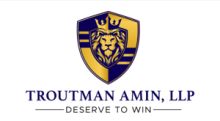Those of you who attended Lead Generation World heard me discuss the big trend from back in 2020 in which Courts were refusing to enforce online disclosures owing to perceived problems with website layout.
Things like “below the button” disclosures and distracting visual elements were often described as defeating a manifestation of assent to disclosure terms in that unfortunate line of cases.
Well, 2022 has brought a couple of cases that have determined website disclosures to be just fine. Yesterday I reported on a big win by Efinancial, and today we have a nice victory by a cruise ship company.
In Barney v. Grand Caribbean Cruises, Inc., CASE NO. 21-CV-61560-RAR, 2022 U.S. Dist. LEXIS 8263 (S.D. Fl. January 17, 2022) the Defendant moved to enforce an arbitration provision on its website arguing that the Plaintiff had agreed to the terms and conditions by submitting a sweepstakes entry form.
Predictably, the Plaintiff argued that the disclosures were not enforceable because the website layout was insufficient–specifically that the font was too small and the terms excessively lengthy.

The Court was not impressed.
Noting that the disclosure was plainly readable and above the button–and it required a check box–the Court simply refused to heed the Plaintiff’s argument that he didn’t know he was agreeing to consent and arbitration. Here’s the analysis:
First, in terms of placement, the Website does not tuck away its statement regarding the Terms & Conditions in an obscure corner of the page where a user is unlikely to encounter it. Rather, the statement is located directly between the contact information fields and the “Submit Entry” button. The user is required to check the box indicating assent to the Terms & Conditions before any information is submitted. Id. ¶ 14. Thus, it is impossible that a user would miss seeing the statement regarding the Terms & Conditions or—at the very least—the checkbox indicating assent to them. Second, rather than merely informing the user that the Terms & Conditions exist, the statement directs the user to the precise location where the Terms & Conditions can be accessed—namely, at the “bottom of the page.” Finally, and most significantly, the user is required to check an acknowledgement box to accept the Terms & Conditions before any information is submitted through the Website—an affirmative act indicating [*14] assent. The checkbox accompanies the statement, which specifically includes language indicating that the user “agree[s] to the Privacy Policy and Terms & Conditions.” Thus, there is an explicit textual notice that checking the box will act as a manifestation of an intent to be bound. A reasonable user confronting a statement that “I consent to receive e-mail, SMS/Text messages, and calls about offers and deals from an automatic dialing system and/or pre-recorded voice technology” and “confirm that I am over age 25 [and] agree to the Privacy Policy and Terms & Conditions that are hyperlinked at the bottom of the page” would understand that he or she is assenting to the linked terms, including those pertaining to mandatory arbitration. And the record shows that Plaintiff indeed checked the box before clicking “Submit Entry.” Connolly Decl. ¶ 20. Plaintiff’s objections to the design of the Website hold no water. Plaintiff assails the statement regarding the Website’s Terms & Conditions as “lengthy” with “extremely small font that blends into the background.” Resp. at 9. But as seen in the screenshot of the Website on the day of Plaintiff’s visit, the statement’s text is clearly legible [*15] and not overly long. Indeed, it is roughly the same size and color as the text indicating the fields for “First Name,” “Last Name,” “Email,” and “Phone Number.” Plaintiff also objects to the placement of the link to the Terms & Conditions at the bottom of the page. Id. at 10. But, as discussed supra, that is precisely where the statement directed the user to view them.
As you can see the Court found the layout to be perfectly appropriate and was particularly moved by the presence of the opt in check box. Although many cases have recently enforced disclosures WITHOUT checkboxes, they do remain favored by the Courts.
I think Barney represents a case of a pretty clearly enforceable provision. The above-the-button text coupled with the radial button and the clear articulation of the terms being accepted made this an easy case for the court.
I will note that the TCPA consent is connected to the terms and conditions lingo–I don’t love that since the TCPA disclosure should be “separately signed”. But the agreement by the consumer that they are over 25 is a nice touch–helps to protect against claims that minors are supplying consent illegally.




 />i
/>i

